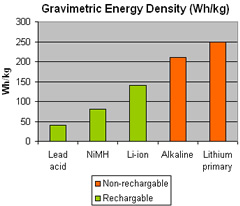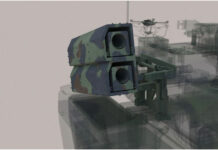In a network centric environment, where communications (and transmission) of data at high capacity are required, power requirements for portable and mobile electronics is outgrowing existing power sources capacity, leading to a shorter service per battery. Therefore, using regenerable power is becoming critical for military planning.
The use of rechargeable technology has many benefits for military users, especially in cost saving and logistics. However, rechargeable Ni-Cd batteries have high specific weight, low energy density (NiMH) and limited capability in low or high temperatures, when compared to primary technology, and therefore, were used mainly for training. Recent technologies made significant improvements in energy density and reduction of total cell weight, especially with the introduction of lithium-ion and Lithium ion polymer rechargeable technologies.
The British Army is currently fielding a new range of rechargeable power sources for its Bowman battlefield communications system, the next generation communications system for the UK military. The new Lithium Ion batteries will replace Ni-Cd cells used in the current Clansman systems. The new batteries will power portable radios, handheld computers, Global Positioning Systems and encryption devices. The US Army is also moving some units to use rechargeable batteries. For example, Units in Afghanistan are now using only rechargeable batteries such as BB 2590.
The British Army is currently fielding a new range of rechargeable Li-ion batteries, replacing older and heavier Ni-Cd cells. The lightweight batteries offer much improved operation in extreme temperatures, with a range of -51C to +75C degrees. The temperature performance of the Cell will end the practice of “shirt stuffing” whereby the existing Ni-Cd battery is carried next to the skin in an attempt to keep it warm. Extended operational life and lower weight also improve the soldier’s load factor. A typical 6 man patrol will have full control over its battery resources, and be able reduce its attributable battery weight load from 14kg to less than 3kg – giving advantages in both mobility and capacity for other equipment.
When properly implemented, self charging of batteries enable re-use of inventory and reduced burden on the supply channels. In the absence of electric power, charging can be done through solar power, windmills and hand-crank generators and fuel cells. Future recharging technologies are also in development, utilizing photo-voltaic and kinetic power sources.
Additional Parts of this article :
- Powering the Land Warrior
- Military use of Primary Lithium Batteries
- Rechargeable Power For Military Use
- Logistic Aspects of Military Batteries
- Logistics of Military Rechargeable Battery



















